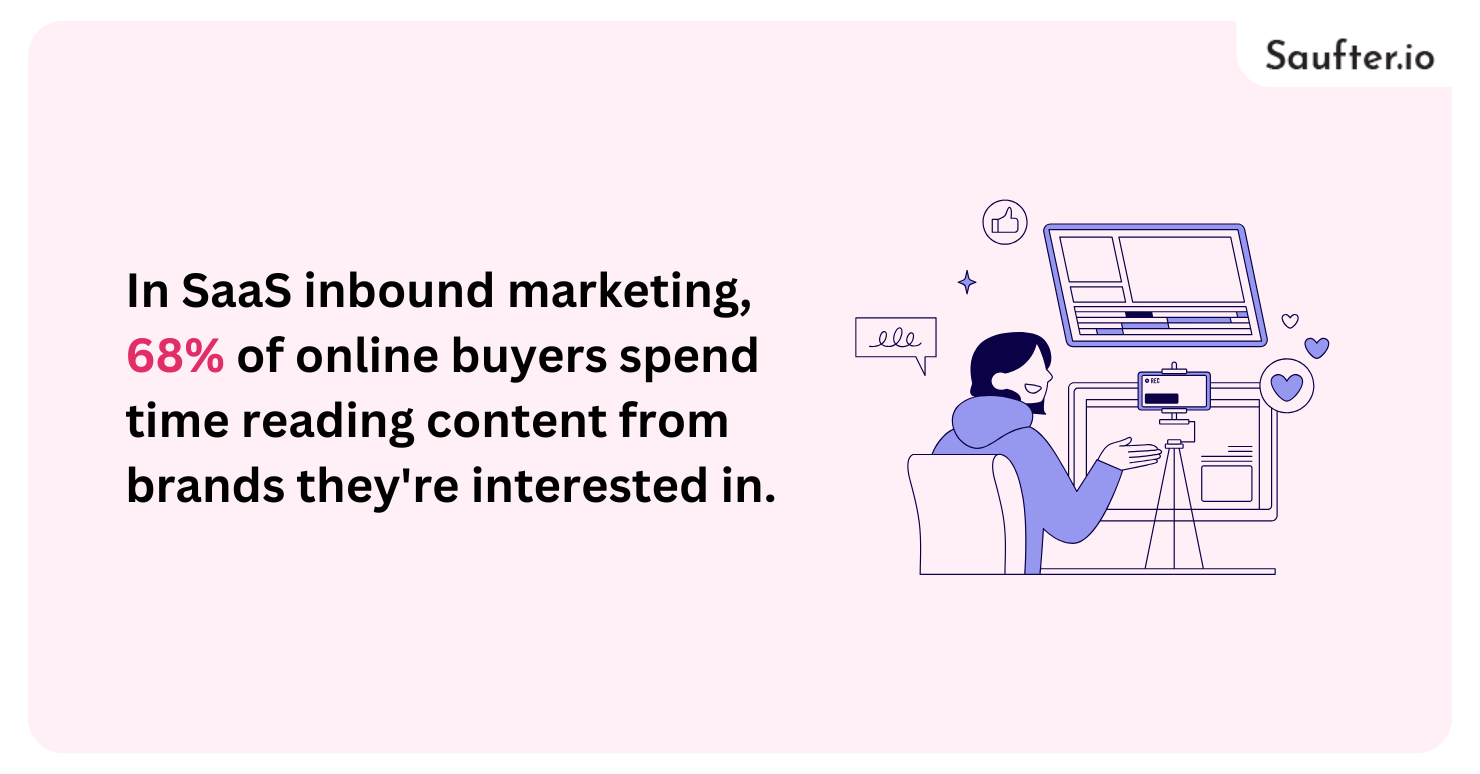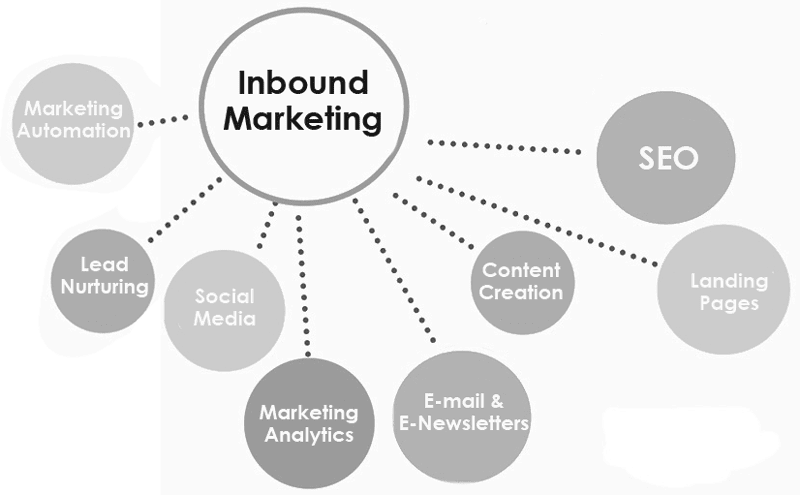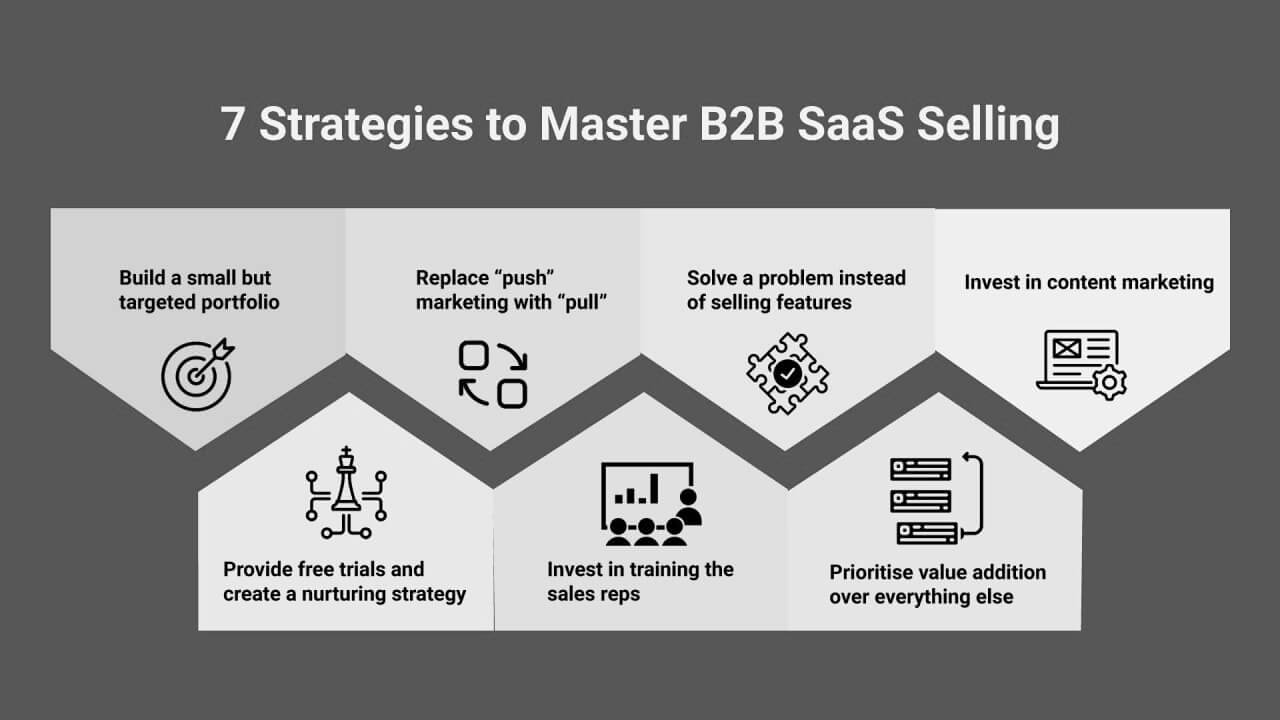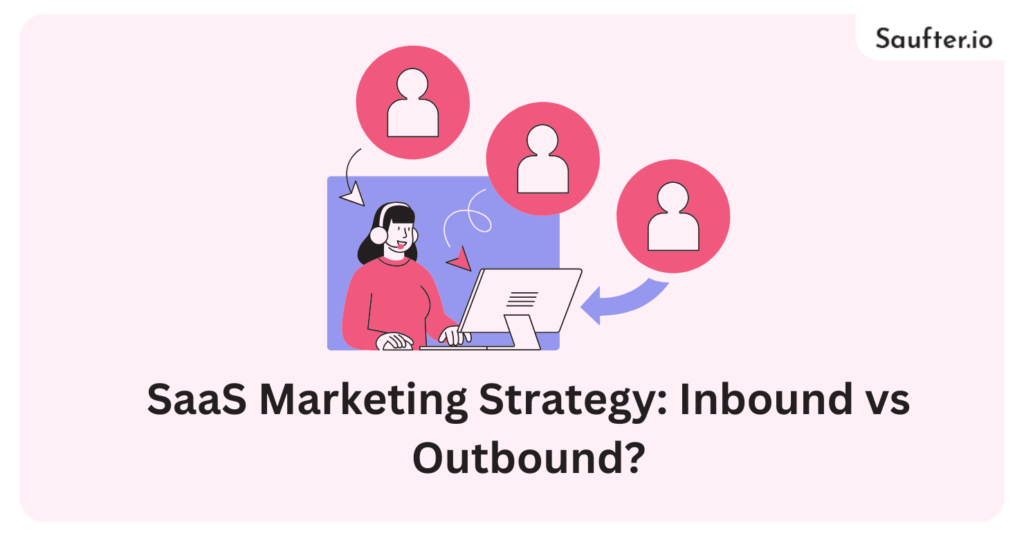Last Updated: December 2025
Developing an effective SaaS inbound marketing strategy in the highly competitive SaaS industry is crucial for scaling your business and driving sustainable growth. One of the biggest decisions SaaS businesses face when creating a go-to-market (GTM) strategy is choosing between inbound and outbound marketing.
While both approaches have advantages and challenges, understanding how to balance them can significantly impact your customer acquisition cost (CAC), lifetime value (LTV), and overall business growth. In SaaS inbound marketing, 68% of online buyers spend time reading content from brands they’re interested in.

In this blog, we will break down the differences between inbound and outbound marketing, explore the pros and cons of each, and help you determine the right balance for your SaaS business. We will also cover real-world examples of SaaS companies that have successfully implemented each strategy, and why a strong focus on SaaS inbound marketing is often the key to long-term success.
What is Inbound Marketing?

Inbound marketing is a strategy designed to attract potential customers to your business through valuable content and resources. The goal is to create interest and draw in leads naturally rather than reaching out directly to them.
How SaaS Inbound Marketing Works
The primary goal of SaaS inbound marketing is to provide valuable information that answers potential customers’ questions and addresses their pain points. For example, a SaaS company offering project management software could create blog posts about productivity tips, team collaboration strategies, and how to avoid common project failures.
When potential customers search for these solutions online, they will come across your content, engage with it, and become familiar with your brand. If the content is helpful and relevant, these visitors are more likely to explore your product and convert into paying customers.
Advantages of Inbound Marketing
- Scalable and cost-effective: Once you create content and optimize it for SEO, it can drive traffic for years with minimal additional cost.
- Higher trust and brand authority: Customers trust brands that provide valuable content and insights.
- Better lead qualification: Visitors who engage with your content are more likely to be actively looking for a solution, making them more qualified leads.
- Evergreen traffic: Blog posts, videos, and SEO-optimized content can continue to drive traffic long after their creation.
- Compounding results: The longer you invest in SaaS inbound marketing, the greater the results.
Challenges of Inbound Marketing
- Takes time to build momentum: SEO and content strategies can take 3–12 months to start showing consistent results.
- Initial investment required: High-quality content creation, SEO tools, and PPC ads require both time and financial resources.
- Competitive landscape: For competitive SaaS niches, it can be difficult to rank on search engines without significant effort.
What is Outbound Marketing?

Outbound marketing refers to actively reaching out to potential customers rather than waiting for them to discover your brand. This strategy involves direct communication and outreach, often targeting specific customer profiles.
How Outbound Marketing Works
Outbound marketing is highly targeted and direct. For example, a SaaS company offering sales automation software could reach out to sales managers directly via email or LinkedIn with a personalized message explaining how the software can improve their team’s performance.
If the outreach is well-researched and relevant, the recipient might schedule a demo or request more information, leading to a potential sale.
Advantages of Outbound Marketing
- Quick results: Unlike inbound marketing, which takes time to build, outbound campaigns can generate leads quickly.
- Highly targeted: Outbound allows you to focus on your ideal customer profile (ICP) and directly communicate with them.
- Better control over the sales pipeline: Since you are actively reaching out, you have more control over the process.
Challenges of Outbound Marketing
- High cost per lead: Outbound campaigns require continuous investment, such as paid ads and SDR (Sales Development Representative) salaries.
- Lower trust and engagement: Prospects are less likely to engage with cold outreach compared to the content they seek out.
- Limited scalability: Outbound efforts stop producing results as soon as you stop investing time and resources.
Why Most SaaS Companies Start with Outbound
Many SaaS companies initially rely on outbound marketing for quick wins and early traction. It is easier for founders to leverage personal networks, cold outreach, and trade shows to secure initial customers.
Outbound marketing works well in the early stages because:
- It provides immediate feedback and results.
- It is easier to test different customer segments and messaging.
- The learning curve for outbound is shorter compared to SEO and content marketing.
However, as the business scales, relying solely on outbound becomes expensive and unsustainable. The results stop the moment you stop investing in outreach, and customer acquisition costs can increase dramatically over time.
Why SaaS Inbound Marketing Should Make Up at Least 50% of Your Strategy
Once you have secured your initial customer base and found product-market fit, you should shift at least 50% of your SaaS marketing strategy toward inbound campaigns.
Here’s why:
- SaaS inbound marketing generates long-term, scalable growth.
- It reduces customer acquisition costs over time.
- It strengthens your brand authority and increases trust.
- Inbound content supports outbound efforts — prospects reached via outbound often visit your site to validate the offering.
Compounding results from content and SEO means your lead-generation efforts become more efficient over time.
Balancing Inbound and Outbound Based on ACV (Annual Contract Value)
The right balance between inbound and outbound marketing depends on your product’s ACV:
ACV | Recommended Strategy |
Less than $10,000 | Focus on SaaS inbound marketing — outbound will be too costly. |
$10,000 – $25,000 | Use a balanced mix of inbound and outbound. |
$25,000+ | Outbound becomes more viable due to higher customer LTV. |
Real-World Examples of SaaS Marketing Strategies
1. Content Camel – Inbound-Only Strategy
Content Camel, a sales enablement platform with a low ACV, focused entirely on SaaS inbound marketing through content and SEO. Over 12 months, their site traffic increased by over 300%, with most leads coming from organic search.
2. High-ACV Logistics Software – Inbound + Outbound Mix
A SaaS company offering logistics software (ACV > $25,000) initially focused on outbound sales. Once they established product-market fit, they shifted 70% of their efforts toward inbound campaigns, reducing CAC while increasing lead volume.
Best Practices for SaaS Inbound Marketing
- Start with bottom-of-the-funnel content: Case studies, product demos, and comparison guides are highly effective.
- Focus on SEO: Target high-intent keywords that align with customer pain points.
- Leverage social proof: Customer testimonials and case studies increase trust.
- Create a consistent content calendar: Publish new content regularly to maintain momentum.
- Track performance: Use marketing attribution to understand which campaigns are driving the most leads.
Outbound vs Inbound Marketing Examples

Examples of SaaS Inbound Marketing:
- Search Engine Optimization (SEO):
Optimizing your website and content for search engines helps improve organic visibility and attract high-intent traffic. By targeting relevant keywords and answering common customer questions, SaaS companies can improve their search rankings and drive more qualified leads. - Content Marketing:
Creating valuable content like blog posts, whitepapers, case studies, and e-books helps educate potential customers and build trust. For example, a SaaS company offering a project management tool might publish blog posts on “best practices for team collaboration” or “how to improve project efficiency.” - Social Media Marketing:
Engaging with potential customers on platforms like LinkedIn, Twitter, and Facebook helps increase brand awareness and build relationships. SaaS companies can share product updates, customer success stories, and industry news to generate interest. - Pay-Per-Click (PPC) Advertising:
Running targeted PPC ads on Google and social media platforms helps SaaS companies reach potential customers who are actively searching for solutions. PPC campaigns can drive quick results and provide valuable insights into customer behavior. - Email Marketing:
Building an email list and sending targeted, personalized campaigns helps nurture leads and convert them into paying customers. Email marketing is particularly effective for SaaS companies looking to onboard new users, offer product tips, and re-engage inactive customers. - Webinars and Online Events:
Hosting webinars and virtual events allows SaaS companies to demonstrate their product’s value in real-time and engage directly with prospects. This helps build trust and establish authority within the industry.
Examples of Outbound Marketing for SaaS:
- Cold Calling and Cold Emailing:
Reaching out directly to potential customers through phone calls or emails can generate leads, especially when using a targeted list and personalized messaging. - LinkedIn Outreach:
Sending connection requests and direct messages on LinkedIn is a common strategy for reaching decision-makers in B2B SaaS sales. Personalized outreach combined with value-driven messaging improves response rates. - Paid Social Media Ads:
Running ads on platforms like Facebook, LinkedIn, and Twitter helps SaaS companies reach new audiences quickly. Targeted ad campaigns based on user demographics, interests, and behavior can drive qualified leads. - Trade Shows and Events:
Attending industry events and trade shows provides opportunities for face-to-face interaction with potential customers and industry leaders. SaaS companies often use these events to showcase product demos and generate leads. - Retargeting Ads:
Retargeting campaigns target users who have already visited a SaaS company’s website or engaged with their content. These ads serve as reminders and help increase conversion rates.
Direct Mail Campaigns:
While less common in SaaS, direct mail (e.g., sending brochures, promotional items, or personalized letters) can help create a memorable connection with potential customers.
B2B SaaS Marketing Strategy

Developing an effective B2B SaaS marketing strategy requires a focused approach that targets decision-makers and solves their specific pain points. Unlike B2C marketing, where emotional appeal often drives purchasing decisions, B2B SaaS buyers are more focused on efficiency, ROI, and long-term value. A successful B2B SaaS marketing strategy should combine SaaS inbound marketing and outbound tactics to generate high-quality leads and nurture them toward conversion.
Key Components of a B2B SaaS Marketing Strategy
- Targeting and Segmentation:
The first step is to define your ideal customer profile (ICP) and buyer personas. Understanding the size of the business, industry, decision-making process, and pain points allows you to tailor your messaging and campaigns effectively. - Content Marketing:
Creating high-quality, educational content such as whitepapers, case studies, industry reports, and blog posts helps establish your brand as a thought leader. Decision-makers in B2B settings rely on data and insights to make informed purchasing decisions. This is a core part of a strong SaaS inbound marketing approach. - Account-Based Marketing (ABM):
ABM focuses on targeting specific high-value accounts with personalized messaging and campaigns. This approach helps increase conversion rates by addressing the unique needs of each account. - SEO and Paid Advertising:
Optimizing content for search engines ensures that potential customers can find your solution when searching for relevant terms. Paid search and LinkedIn ads can help capture demand quickly and improve visibility. - Email and Retargeting Campaigns:
Nurturing leads through automated email workflows and retargeting campaigns ensures consistent follow-ups and helps keep your brand top of mind. - Product-Led Growth (PLG):
Offering free trials or freemium versions encourages potential customers to experience your product’s value firsthand, increasing the likelihood of conversion.
A well-executed SaaS inbound marketing strategy helps B2B SaaS companies generate higher-quality leads and improve customer acquisition, while outbound tactics help scale those efforts for faster growth.
Let us now introduce you to the best AI-based Email marketing tool- Saufter.io
Saufter: The Best AI-Based Email Marketing Tool
In the fast-paced world of digital marketing, Saufter AI stands out as the ultimate solution for businesses looking to optimize their email campaigns with cutting-edge artificial intelligence. Whether you run a SaaS platform, an e-commerce store, or any other online business, Saufter AI empowers you with data-driven insights and automation to enhance engagement and conversions.
Key Features
- Competitor Email Tracking: Automatically monitors and analyzes your competitors’ email campaigns, helping you stay ahead of the curve.
- User Behavior Analysis: Studies user interactions on your website and tracks their journey to generate targeted campaign suggestions.
- Personalized Email Campaigns: AI-driven personalization enhances email deliverability and engagement, ensuring your messages reach the right audience.
- Cohort-Based Suggestions: Segment users based on their engagement levels and behaviors to optimize campaign effectiveness.
Conclusion

An effective SaaS marketing strategy combines the strengths of both inbound and outbound approaches. Start with outbound to get early traction, but shift toward SaaS inbound marketing for long-term, scalable results as you grow.
The ideal strategy will depend on your ACV, sales cycle, and target market, but regardless of your approach, investing at least 50% of your efforts into inbound marketing will set you up for sustainable growth.
Developing a balanced SaaS marketing strategy will help you generate consistent leads, reduce acquisition costs, and improve customer lifetime value.
















